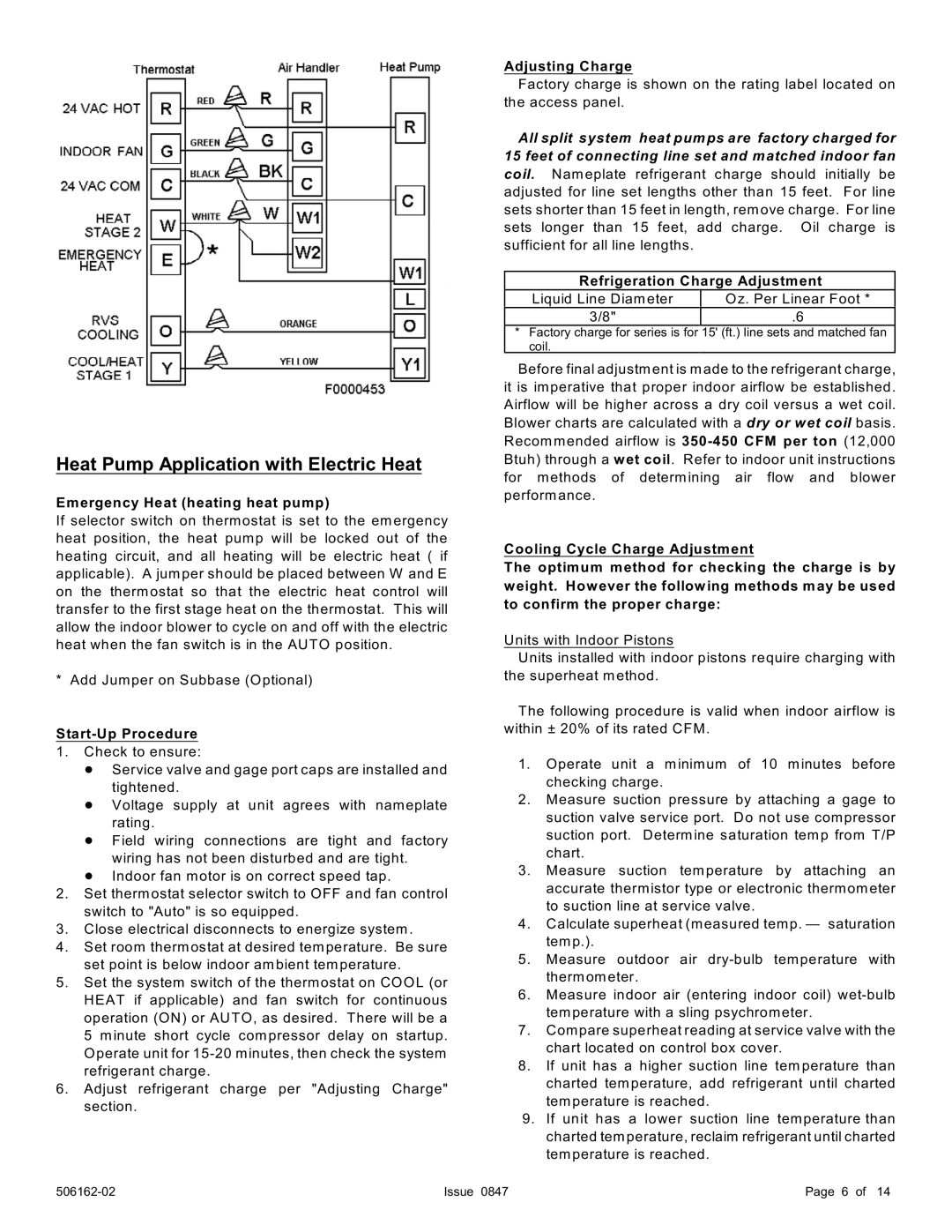
Heat Pump Application with Electric Heat
Emergency Heat (heating heat pump)
If selector switch on therm ostat is set to the em ergency heat position, the heat pump will be locked out of the heating circuit, and all heating will be electric heat ( if applicable). A jum per should be placed between W and E on the therm ostat so that the electric heat control will transfer to the first stage heat on the therm ostat. This will allow the indoor blower to cycle on and off with the electric heat when the fan switch is in the AUTO position.
* Add Jum per on Subbase (Optional)
Start-Up Procedure
1.Check to ensure:
!Service valve and gage port caps are installed and tightened.
!Voltage supply at unit agrees with nam eplate rating.
!Field wiring connections are tight and factory wiring has not been disturbed and are tight.
!Indoor fan motor is on correct speed tap.
2.Set therm ostat selector switch to OFF and fan control switch to "Auto" is so equipped.
3.Close electrical disconnects to energize system .
4.Set room thermostat at desired tem perature. Be sure set point is below indoor ambient tem perature.
5.Set the system switch of the therm ostat on COOL (or HEAT if applicable) and fan switch for continuous operation (ON) or AUTO, as desired. There will be a 5 minute short cycle compressor delay on startup. Operate unit for
6.Adjust refrigerant charge per "Adjusting Charge" section.
Adjusting Charge
Factory charge is shown on the rating label located on
the access panel.
All split system heat pumps are factory charged for
15 feet of connecting line set and matched indoor fan
coil. Nam eplate refrigerant charge should initially be adjusted for line set lengths other than 15 feet. For line sets shorter than 15 feet in length, rem ove charge. For line sets longer than 15 feet, add charge. Oil charge is sufficient for all line lengths.
Refrigeration Charge Adjustment
Liquid Line Diam eter | Oz. Per Linear Foot * |
3/8" | .6 |
*Factory charge for series is for 15' (ft.) line sets and matched fan coil.
Before final adjustm ent is made to the refrigerant charge, it is im perative that proper indoor airflow be established. Airflow will be higher across a dry coil versus a wet coil. Blower charts are calculated with a dry or wet coil basis. Recomm ended airflow is
Cooling Cycle Charge Adjustment
The optimum method for checking the charge is by weight. However the following methods may be used to confirm the proper charge:
Units with Indoor Pistons
Units installed with indoor pistons require charging with the superheat method.
The following procedure is valid when indoor airflow is within ± 20% of its rated CFM .
1.Operate unit a m inim um of 10 minutes before checking charge.
2.Measure suction pressure by attaching a gage to suction valve service port. Do not use com pressor suction port. Determ ine saturation tem p from T/P chart.
3.Measure suction tem perature by attaching an accurate therm istor type or electronic therm om eter to suction line at service valve.
4.Calculate superheat (measured tem p. — saturation tem p.).
5.Measure outdoor air
6.Measure indoor air (entering indoor coil)
7.Com pare superheat reading at service valve with the chart located on control box cover.
8.If unit has a higher suction line tem perature than charted tem perature, add refrigerant until charted tem perature is reached.
9.If unit has a lower suction line tem perature than charted tem perature, reclaim refrigerant until charted tem perature is reached.
Issue 0847 | Page 6 of 14 |
